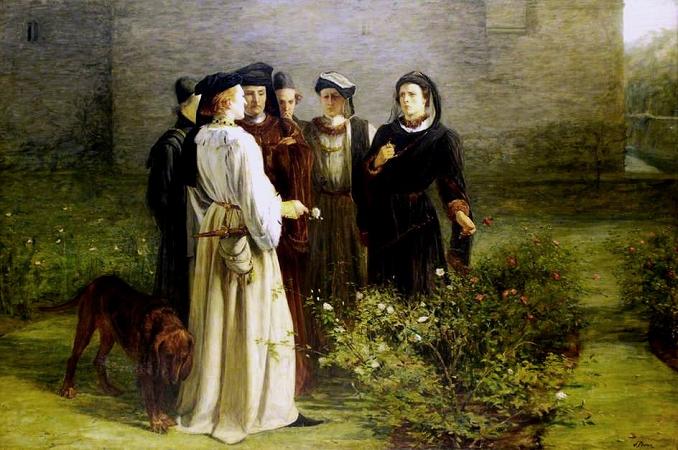1 Henry VI (c1591). Henry VI, Part 1, often referred to as 1 Henry VI, is a history play by William Shakespeare, possibly in collaboration with Christopher Marlowe and Thomas Nashe, believed to have been written in 1591. It is set during the lifetime of King Henry VI of England. Whereas Henry VI, Part 2 deals with the King's inability to quell the bickering of his nobles and the inevitability of armed conflict and Henry VI, Part 3 deals with the horrors of that conflict, Henry VI, Part 1 deals with the loss of England's French territories and the political machinations leading up to the Wars of the Roses, as the English political system is torn apart by personal squabbles and petty jealousy. Although the Henry VI trilogy may not have been written in chronological order, the three plays are often grouped together with Richard III to form a tetralogy covering the entire Wars of the Roses saga, from the death of Henry V in 1422 to the rise to power of Henry VII in 1485. It was the success of this sequence of plays that firmly established Shakespeare's reputation as a playwright. Some regard Henry VI, Part 1 as the weakest of Shakespeare's plays. Along with Titus Andronicus, it is generally considered one of the strongest candidates for evidence that Shakespeare collaborated with other dramatists early in his career. The play begins with the funeral of Henry V, who has died unexpectedly in his prime. As his brothers, the Dukes of Bedford and Gloucester, and his uncle, the Duke of Exeter, lament his passing and express doubt as to whether his son is capable of running the country in such tumultuous times, word arrives of military setbacks in France. A rebellion, led by the Dauphin Charles, is gaining momentum, and several major towns have already been lost. Additionally, Lord Talbot, Constable of France, has been captured. Realising a critical time is at hand, Bedford immediately prepares himself to head to France and take command of the army, Gloucester remains in charge in England, and Exeter sets out to prepare young Henry for his forthcoming coronation. Meanwhile, in Orleans, the English army is laying siege to Charles' forces. Inside the city, the Bastard of Orleans approaches Charles and tells him of a young woman who claims to have seen visions and knows how to defeat the English. Charles summons the woman, Joan la Pucelle. To test her resolve, he challenges her to single combat. Upon her victory, he immediately places her in command of the army. Outside the city, the newly arrived Bedford negotiates the release of Talbot, but immediately, Joan launches an attack. The French forces win, forcing the English back, but Talbot and Bedford engineer a sneak attack on the city, and gain a foothold within the walls, causing the French leaders to flee. Back in England, a petty quarrel between Richard Plantagenet and the Duke of Somerset has expanded to involve the whole court. Richard and Somerset ask their fellow nobles to pledge allegiance to one of them, and as such the lords select either red or white roses to indicate the side they are on. Richard then goes to see his uncle, Edmund Mortimer, imprisoned in the Tower of London.
more...








